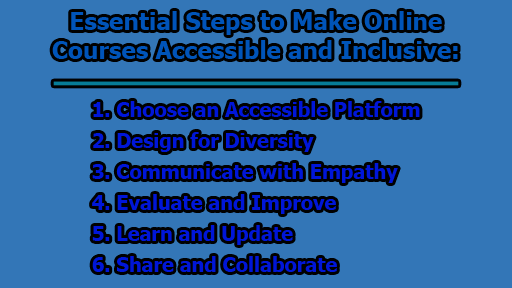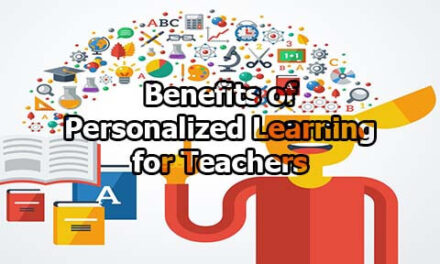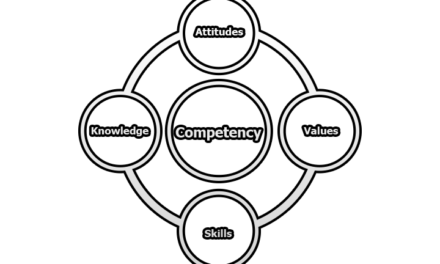Essential Steps to Make Online Courses Accessible and Inclusive:
The rise of online learning has revolutionized the way we acquire new skills and knowledge. Online courses offer the convenience and flexibility that traditional classroom settings often lack. However, as the popularity of online education continues to grow, so does the need for creating accessible and inclusive learning environments. Accessibility ensures that learners with diverse abilities and preferences can access course content without barriers, while inclusion ensures that learners feel valued and supported, regardless of their background or identity. In this article, we will explore essential steps to make online courses accessible and inclusive.
1. Choose an Accessible Platform: The foundation of an inclusive online course begins with selecting a learning management system (LMS) that adheres to web accessibility standards and guidelines, such as the Web Content Accessibility Guidelines (WCAG). An accessible LMS guarantees that the course content is perceivable, operable, understandable, and robust for all learners. Key features to look for include text alternatives for images, captions and transcripts for audio and video, keyboard navigation, color contrast, and adjustable font size. By choosing an accessible platform, you set the stage for creating a learning environment that accommodates the needs of a wide range of learners.
2. Design for Diversity: Diversity is at the heart of inclusion. To create an inclusive online course, design course content, and activities with diversity in mind. Consider the various characteristics of your learners, including age, gender, culture, language, disability, education, and experience. To promote diversity, use clear and simple language, avoid jargon and slang, and provide multiple formats and modes of presentation. Offering choices and options for learners, along with using inclusive and respectful examples and scenarios, will make your course content more accessible to a broader audience.
3. Communicate with Empathy: Effective communication is a cornerstone of inclusive online courses. Empathy plays a pivotal role in creating an environment where learners feel supported and valued. Empathetic communication involves using positive and encouraging language, acknowledging and addressing learners’ concerns and questions, providing clear and timely feedback, and fostering a sense of community and belonging among learners. Communicating with empathy establishes trust and encourages active participation.
4. Evaluate and Improve: Continuous evaluation and improvement are crucial for maintaining an accessible and inclusive online course. Collect and analyze data and feedback from your learners and other stakeholders, such as instructors, administrators, and experts. Use this information to identify and address gaps and issues in your course content and delivery. Making changes and enhancements based on feedback will ensure that your course remains responsive to the evolving needs of your learners.
5. Learn and Update: The field of online education is continually evolving, as are best practices for accessibility and inclusion. Stay informed and keep your knowledge and skills up to date by seeking relevant and reliable sources of information and guidance. This may include online courses, webinars, blogs, podcasts, books, and articles. Updating your knowledge will enable you to apply the latest trends and developments in accessibility and inclusion to your course design and delivery.
6. Share and Collaborate: Sharing and collaborating with others in the field is an excellent way to promote accessibility and inclusion. Disseminate and showcase your course and its outcomes, such as learner satisfaction, retention, completion, and achievement. Network and partner with other professionals, organizations, and communities that are involved or interested in accessibility and inclusion. This collaboration allows you to exchange ideas, experiences, and resources, creating a stronger and more inclusive online learning community.
In conclusion, creating accessible and inclusive online courses is essential for ensuring that education is available to all, regardless of their abilities, preferences, or backgrounds. By choosing an accessible platform, designing for diversity, communicating with empathy, evaluating and improving, learning and updating, and sharing and collaborating, you can make your online courses truly accessible and inclusive. As online education continues to thrive, it is our responsibility to ensure that it remains open and welcoming to everyone.

Library Lecturer at Nurul Amin Degree College










